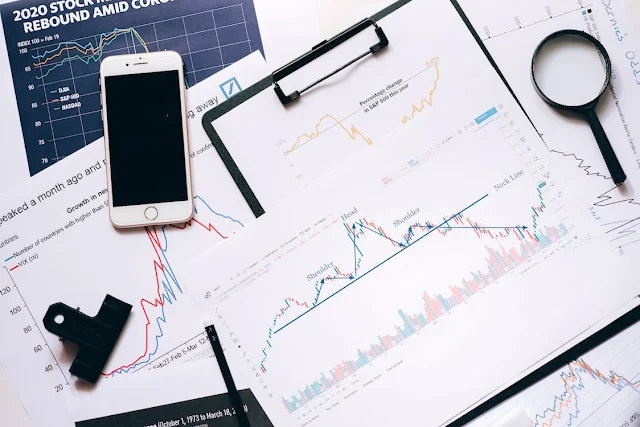The Key to Success for Successful Traders: Understanding Chart Patterns and Types
What Are Chart patterns
Chart patterns are graphical representations of price and volume data in a financial market, used in technical analysis to help predict future price movements. Technical analysts use chart patterns to identify trends and market sentiment, as well as to make trading decisions based on their interpretation of the data.
Chart patterns can be classified into two types: reversal patterns and continuation patterns. Reversal patterns indicate that a trend is likely to reverse, while continuation patterns indicate that a trend is likely to continue.
Some common chart patterns include head and shoulders, triangles, wedges, and flag and pennant patterns. These patterns can be used in combination with other technical analysis tools, such as trend lines, moving averages, and momentum indicators, to increase the accuracy of the predictions.
How Chart patterns Helps in making profits
Chart patterns can help traders make profits by providing a visual representation of market sentiment and price action. By recognizing and interpreting chart patterns, traders can make informed decisions about buying or selling securities and can potentially profit from price movements in the market.
Here's how chart patterns can help traders make profits:
Identification of Trend Reversals: Chart patterns can help traders identify potential trend reversals, allowing them to potentially profit from changes in market sentiment. For example, a head and shoulders pattern may indicate that a downtrend is likely to reverse, providing a potential opportunity for traders to buy.
Identification of Trend Continuation: Chart patterns can also help traders identify potential trend continuation, allowing them to potentially profit from continued price movements in the same direction. For example, a bullish flag pattern may indicate that an uptrend is likely to continue, providing a potential opportunity for traders to hold or add to their long positions.
Setting Trade Entries and Exits: Chart patterns can provide traders with an objective way to set trade entries and exits based on price levels and patterns. For example, a trader may enter a long position after a double bottom pattern forms and exit the trade after a potential trend reversal pattern appears.
Chart patterns can be categorized into two main types: reversal patterns and continuation patterns.
Reversal Patterns: Reversal patterns indicate a potential change in market sentiment and a reversal of the current trend. Some common reversal patterns include:
- Head and Shoulders (Bearish)
- Reverse Head and Shoulders (Bullish)
- Double Top (Bearish)
- Double Bottom (Bullish)
- Triple Top (Bearish)
- Triple Bottom (Bullish)
Continuation Patterns: Continuation patterns indicate a potential continuation of the current trend. Some common continuation patterns include:
- Bullish Flag (Bullish)
- Bullish Pennant (Bullish)
- Rising Wedge (Bearish)
- Falling Wedge (Bullish)
- Symmetrical Triangle (Neutral)
- Ascending Triangle (Bullish)
- Descending Triangle (Bearish)
.png)








.png)


0 $type={blogger}:
Post a Comment
Found Spell Error , Need to add more content use this form to Suggest Edit